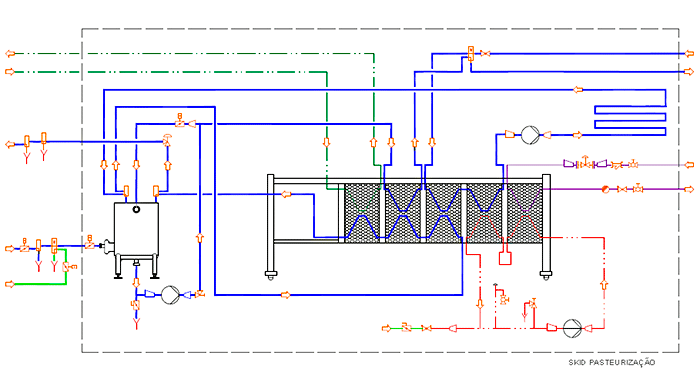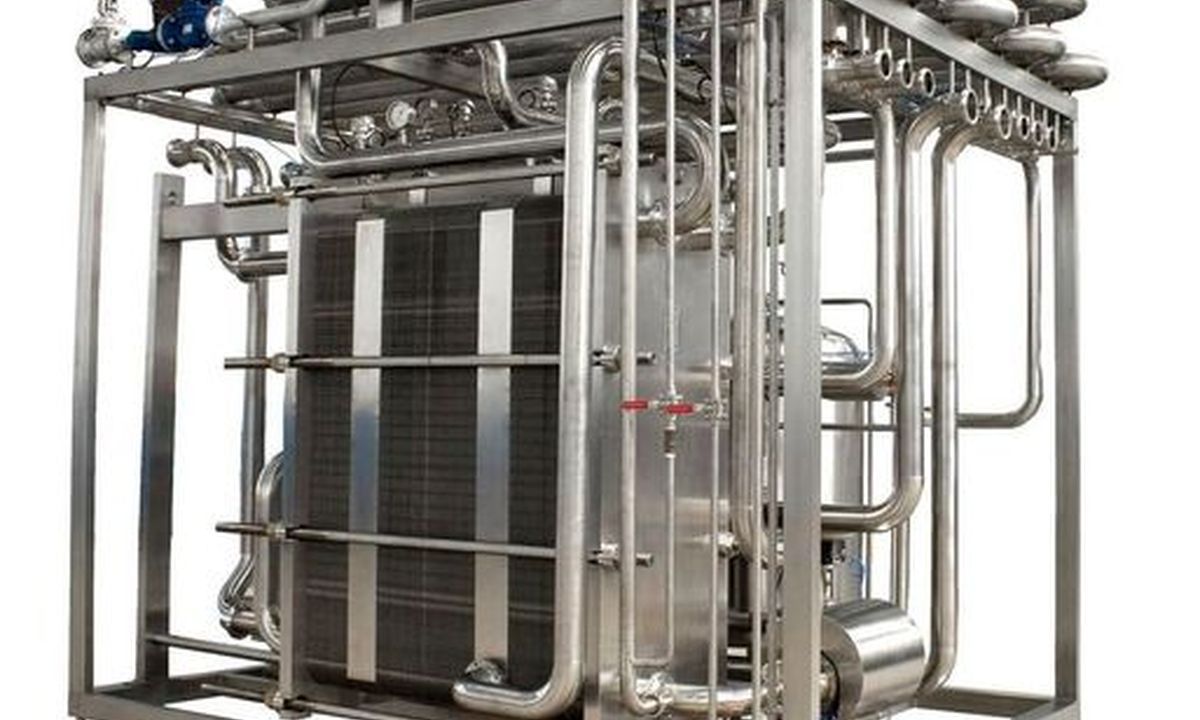In Edelstahl's pasteurization set, whole raw milk is pumped to the heat exchanger plates at 5°C. From this point, it is preheated in the 1st regeneration section until it reaches 55°C. Then, it is directed to Edelstahl's standardization and cream set for fat adjustment.
After the regeneration sections, the product is heated to 75°C by circulating it in countercurrent hot water. This section includes a hot water generator set comprising centrifugal pump, heat exchanger and tubular fittings for stem supply and control.
After the heating section, the product is sent to the tubular retardant where it remains for 16 seconds.
After it reaches the desired pasteurization temperature, the milk is cooled by regenerative effect until the approximate temperature of 11° C, and then cooled to 5° C by cold water counter-current circulation.
By using Edelstahl's pasteurization systems your company gets benefits that translate into real advantages.
Compact: Smaller footprint and less material used.
Plug and Play: Reduced assembly times of feeding pipes and plant utilities, usually made by the customer at the deployment site.
Engineering: Specialized engineers parapre the construction project, that includes design and technical specification of materials.
Quality: Quality assurance of purchased materials, welding and operation, as the system is pre-tested in our factory, which cuts installation put-in-gear time.
Lower Cost: No additional costs of manpower for implementing the client's internal equipment interconnections.
Mobility: Installation mobility for any changes in layout, once the system is pre-mounted and can be transferred to any other place, thus reducing future material costs and labor.
Service: A full service department is available to our business partners enabling prompt service.
Warranty: Edelstahl's experience in the milk market in Brazil allows us to offer end customers a 5-year warranty on all parts and equipment against defects in workmanship.

How It Works
Whole raw milk is pumped to the heat exchanger plates at 5°C, where it is preheated in the 1st section of the regeneration until it reaches 55°C. At this point, it will be sent to Edelstahl's standardization / skimming set for fat control.
After the regeneration sections, the product is heated to a temperature of 75°C by circulating it in countercurrent hot water. This section includes a hot water generator set comprising a centrifugal pump, a heat exchanger, and tubular fittings for steam supply and control.
After the heating section, the product will be sent to a tubular delay retarder for 16 seconds. After it reaches the desired pasteurization temperature, the milk is cooled by regenerative effect until approximately 11°C, and then cooled to 5°C by circulating it in counter-current cold water.
Dimensions

Power Consumption





